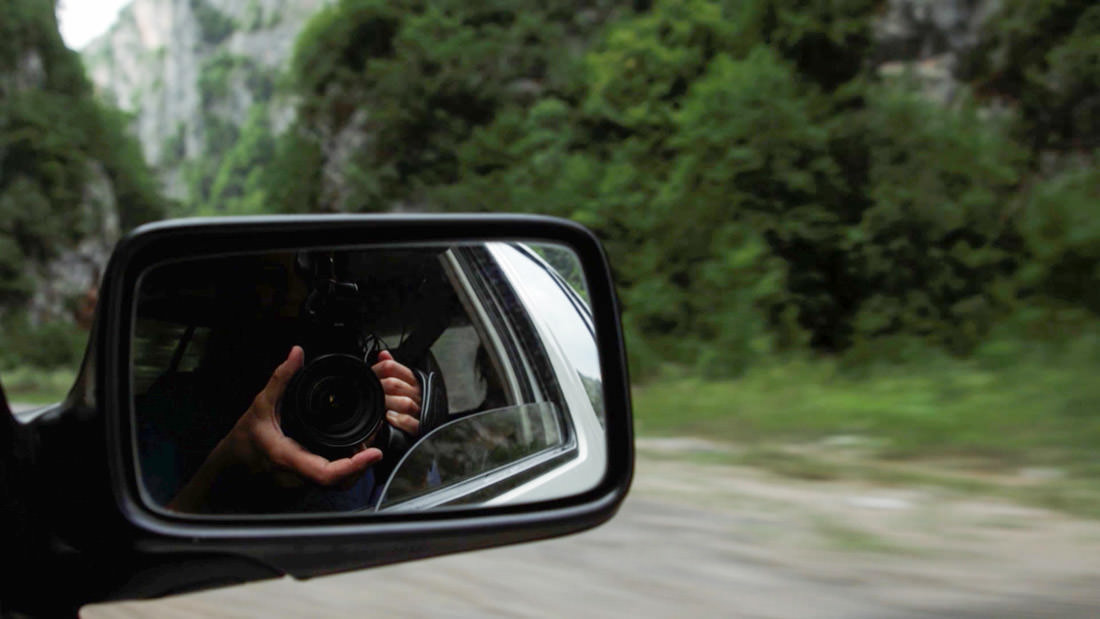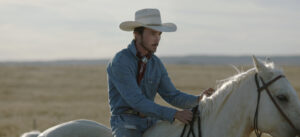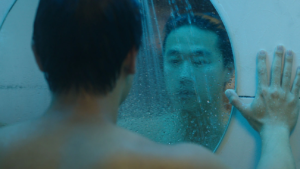Embrace Contradictions
For her critically acclaimed and deeply personal documentary Dick Johnson is Dead, Johnson’s inspiration came from the biggest contradiction of all: acknowledging her father’s mortality while simultaneously attempting to keep him alive forever. After losing her mother to Alzheimer’s Disease and learning her father, Dick Johnson, had been diagnosed with dementia, she realized she needed to be present for such a transitional time in her father’s life and helped him move from his home of 50 years to her apartment in New York City. Being a filmmaker, she decided to film this emotionally charged time in their lives. But she didn’t stop there. In an unorthodox approach to documentary filmmaking, she asked him to stage multiple scenes depicting how he could possibly die, to be intercut with the vérité footage.
“This film is a full on experiment with life and death,” says Johnson. “I know on one level I’m going to fail; of course my father is going to die someday. So how do we make something that keeps him alive? We can kill him in the movie and bring him back to life.”
Johnson says she has a fascination with dementia because her father no longer understands time or space, which is a stark contrast to her work. “As a cameraperson, you are translating time. You are in the present with the knowledge that the footage you are filming will be used in the future. You’re a translator between your own interior experience and that of the people you are filming.” The feelings that filming evokes for you as a cameraperson may be completely different from what it evokes from your subject, which in turn can be different from the experience of the audience.
One of the things I believe about image making is that images continue to be made by the people who watch them.
Understand the Relationships You Create By Capturing Images
Filming and creating a narrative that reflects the world around you is all about understanding relationships you will create through the very act of holding a camera.“Me plus the camera together are capable of making images,” says Johnson. “So already, it’s a relationship between me and the camera, even if no one is there. That’s relationship #1. Then obviously there are the people who surround the camera, behind it and in front of it. Maybe even the dead are present.”
Collecting images that interest her is a cornerstone of Johnson’s creative process, whether it’s in film or physical images such as photographs or clippings from printed media. “Images are a way of keeping track of who I’ve been and it’s a stimulating source book for me. I give myself my own ideals. What do I wish to be? What movie do I wish I had made?”
That inspiration stays with Johnson when it comes to her own work behind the camera. “With your directors and other cinematographers, create time to look at other peoples’ footage and your footage in the process of being edited,” Johnson says. Studying images this way is what ultimately led to her acclaimed documentary, Cameraperson. The film is comprised of footage that Johnson shot throughout her career for many different projects and in many different countries.
“Cameraperson was so meaningful to me because I spent a lot of time in the edit room with my own footage that I had shot for other people,” explains the filmmaker. “I started to be able to see it in my own way from the perspective of the future. While I was filming it I was in the present and limited by my own blind spots.”
It’s also important to remember what will change once you, as the camerapserson, have captured those images. It’s not the end of creating those relationships’ rather, it’s a shift to how relationships will be constructed with your audience. “One of the things I believe about image making is that images continue to be made by the people who watch them,” she says.
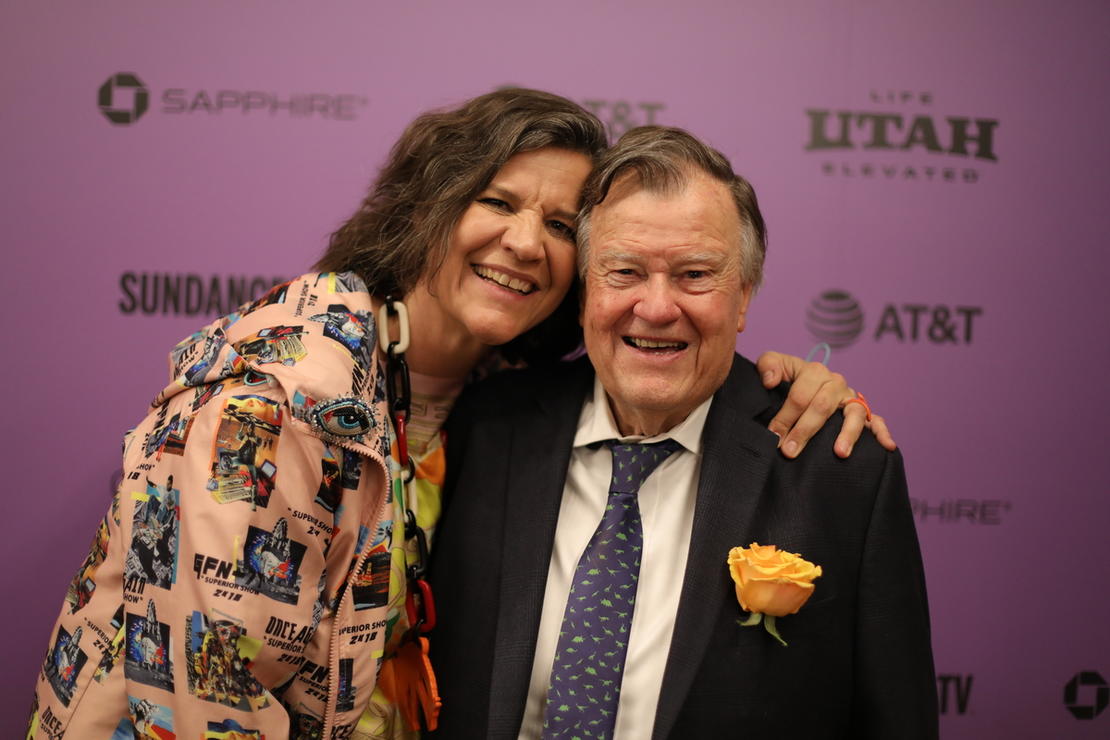 Kirsten Johnson and her father, Dick Johnson, at the Sundance Film Festival Premier of DICK JOHNSON IS DEAD
Kirsten Johnson and her father, Dick Johnson, at the Sundance Film Festival Premier of DICK JOHNSON IS DEADRecognize the Inherent Power a Cameraperson Holds
“We always have to talk about power when we talk about camerawork,” Johnson stresses. When filming, it’s crucial to remember that you have the power to define how these images, including your subjects, are portrayed to the world, and that these images will continue to live on long after you or your subject have passed away. Especially with the advent of the internet and streaming, filmmakers have less control over how their images are distributed now than they ever have before.
Dick Johnson is Dead required a lot of acknowledgment on the subject of power, both between Johnson and her father and the far more complex relationship between life and death. “I was pretty clear I didn’t have any power on one level,” she explains. “On another level, I did. Filming my father would give me the chance to reconstruct the part of him that was falling apart because of dementia and it would give me a chance to hold onto him after death.”
It’s critical to understand how and why you want to film something or someone, but it’s just as important to ask yourself why your subject wants to be filmed and how their motivations may change over time. Cameraperson included footage Johnson had shot during a boxing match, and any boxer participating in the event agreed, as a condition of competing, to be filmed. Johnson explains what happened with a particular athlete, who had agreed to be filmed at a time when he thought he would win the match, which did not turn out to be the case.
“He saw me and he was really angry,” Johnson explains. “How did that shift his relationship [to the camera]? He thought he was going into privacy when he went down the hall. When he saw me he realized he wasn’t in privacy.” Johnson kept the camera on him as he angrily left the ring and walked down the hall to the locker room, but she made a decision to respect a certain boundary once the boxer had walked away from her and into a bathroom. “I felt like he was setting a limit when he went into the bathroom, saying ‘Don’t follow me in here, lady!’”
Though she didn’t follow him into the bathroom, she did keep the camera rolling and patiently waited for him to come out again. Once he did, she was able to follow him again and capture a sweet moment where he went looking for his mother. These are the decisions that shape what kind of an artist you are and what kind of story you want to tell. “We are revealed by what we film and how we film,” Johnson says.
Try to make meaningful work, try to find a process that is respectful to other people, try to accept your limitations and be kind to yourself…
Let Your Interests Define Your Creative Process
Johnson was filming another movie in Kabul, Afghanistan when she ultimately created her short film, The Above. While living in Kabul, she noticed a blimp in the sky and asked what it was, only to be given the short answer: “That’s classified.” She was subsequently ordered not to film it. “I thought, wait a minute, are you seriously telling me I can’t film the sky?”
Her interest in the blimp came from her background of growing up in a religious household. “It’s not just political, it stretches to my own personal experience as a child who was raised religiously and who believed a Bible verse that said, ‘God knows your thoughts before you think them.’ I believed that and it’s a part of how my brain structure was formed.” When she began filming and interviewing locals, Johnson found that the assumptions and opinions of the blimp varied greatly, but at the same time, many mirrored her own fascination. “It was amazing to find a man who said to me, ‘God created the person who made the blimp and God sees everything.’ It was as if this man was speaking to my childhood self.”
Johnson began with smaller, basic questions while filming The Above: What is this blimp? Who controls it? And what does the community think of it? But as is often the case with any artistic medium, those smaller questions are gateways to larger questions about the human experience and the larger world in which we all live. “What are the big systems at work? Militaries, religions, nationalism, social control, expectations for what one gender can do or be or how many genders there are, all of those things.” Johnson’s process was all about gathering evidence, finding clues, taking risks and discovering how uncovering answers from her interview subjects revealed who they were as people. She also points out the importance of asking questions when you have the opportunity; you may not know how much time you have in a particular space and when you might be asked to leave.
By following her instincts on her own terms and in her own time outside of her other shoot, Johnson ended up making an entire film out of a simple curiosity.
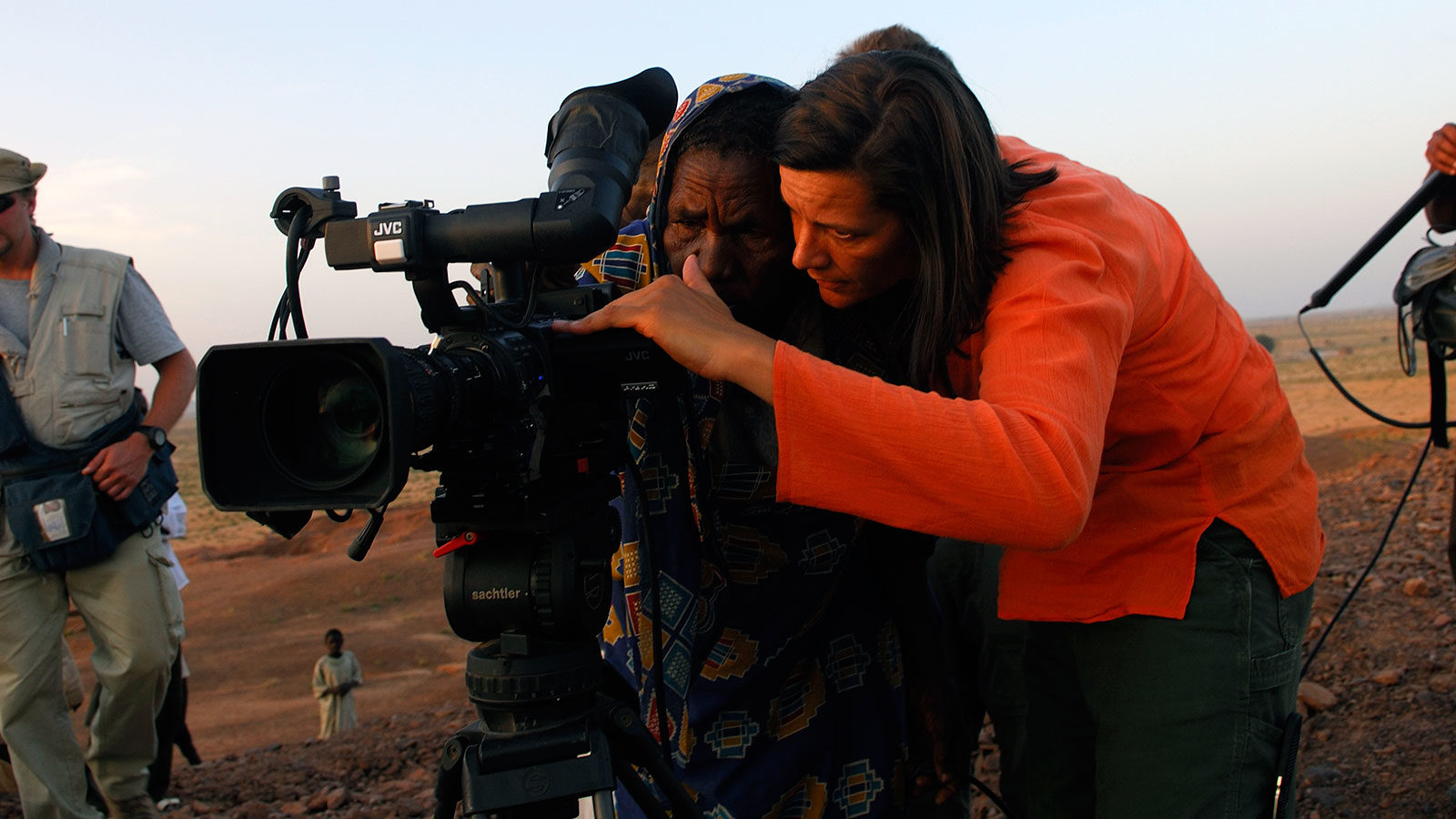 Kirsten Johnson in CAMERAPERSON (2016)
Kirsten Johnson in CAMERAPERSON (2016)According to Johnson, being a filmmaker will not be an easy road of self-discovery, so it’s critical to confront the hard choices in life—especially those that come with responsibilities and contradictions—and do your best to embrace the challenges and build community. She emphasizes, “Try to make meaningful work, try to find a process that is respectful to other people, try to accept your limitations and be kind to yourself, and try to make some gorgeous movies that change our lives and inspire us.”
